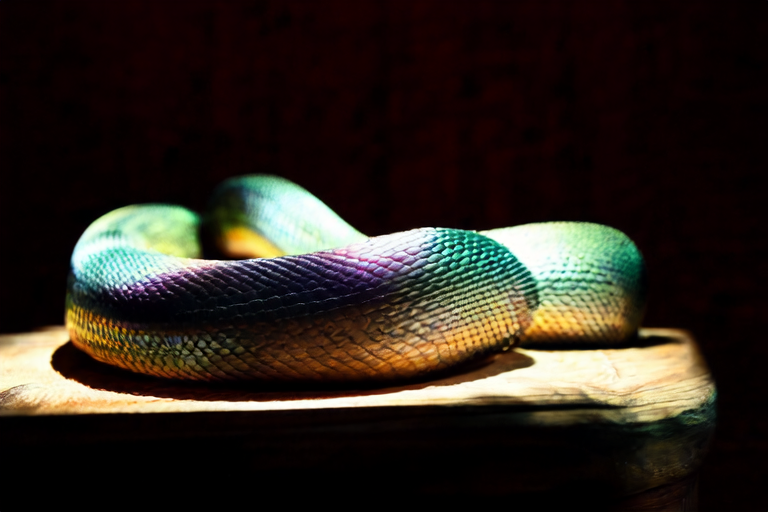Caring for Rainbow Boas: A Comprehensive Guide
Rainbow boas (Epicrates cenchria) are popular among reptile enthusiasts due to their striking appearance and relatively docile nature. This guide provides an overview of how to care for these beautiful snakes, covering everything from habitat setup to handling techniques and health care.
Habitat Setup
Creating a suitable environment for your rainbow boa is crucial for its well-being. Start by selecting an appropriate enclosure; adult rainbow boas typically require enclosures that are at least 48 inches long, 24 inches wide, and 18 inches tall. For juveniles, smaller enclosures can suffice, but they should be upgraded as the snake grows.
The substrate is another important consideration. Cypress mulch or coconut fiber works well because it holds moisture without becoming moldy. Avoid using wood shavings or sand, which can cause respiratory issues or impaction if ingested. Provide plenty of hiding spots, such as half logs, cork bark, or artificial caves, to help your snake feel secure.
In addition to hiding spots, include branches for climbing and perching. These not only provide enrichment but also allow your snake to thermoregulate by moving between warmer and cooler areas within the enclosure.
Temperature and Humidity Requirements
Maintaining proper temperatures and humidity levels is essential for the health of your rainbow boa. The ambient temperature in the enclosure should range between 78°F and 85°F (25°C to 29°C). Use a heat mat or under-tank heater to create a warm side of the enclosure, while leaving the other side cooler for thermoregulation.
Humidity should be kept between 60% and 80%. You can achieve this by misting the enclosure daily or using a humidifier. It’s also helpful to place a water dish large enough for your snake to soak in. Monitor both temperature and humidity regularly with reliable thermometers and hygrometers.
Diet
Rainbow boas are carnivorous and primarily feed on rodents, such as mice and rats. Juvenile rainbow boas can start with pinky mice, progressing to larger prey items as they grow. Feed your snake appropriately sized prey once every 5-7 days. Overfeeding can lead to obesity, so it’s important to monitor your snake’s weight and adjust feeding frequency accordingly.
It’s recommended to thaw frozen prey before offering it to your snake. Thawing ensures that the prey item is safe for consumption and easier for your snake to digest. Some owners prefer to warm the prey slightly by placing it in a sealed bag on top of a heating pad.
Handling Techniques
Handling your rainbow boa gently and frequently helps build trust and reduces stress. Always wash your hands before and after handling to prevent the transfer of bacteria or parasites. Support the snake’s body fully when holding it, being careful not to squeeze too tightly.
Avoid handling your snake for at least 24 hours after feeding to give it time to digest its meal. Also, refrain from handling during shedding periods, as this can cause stress and potential injury to the snake.
Health Care
Regular veterinary check-ups are important for maintaining your rainbow boa’s health. Look for signs of illness, such as lethargy, loss of appetite, or changes in skin coloration. Common health issues include respiratory infections, mouth rot, and internal parasites. Early detection and treatment are key to preventing serious complications.
To maintain good health, provide clean water, a balanced diet, and appropriate environmental conditions. Quarantine new additions to your collection for at least 30 days to prevent introducing diseases to your established pets.
Breeding Information
If you’re interested in breeding rainbow boas, it’s important to understand the basics. Breeding season usually begins in late fall or early winter, when temperatures are lowered gradually over several weeks to trigger reproductive behavior. After mating, females will lay eggs approximately two months later.
Incubate the eggs at around 82°F (28°C) with high humidity. Hatchlings emerge after about 60 days. Newborns can be housed individually in small enclosures with similar environmental conditions to adults, but with smaller prey items.
Common Misconceptions
One common misconception about rainbow boas is that they are aggressive. In reality, they tend to be quite docile and easy to handle when properly cared for. Another myth is that they require less attention than other species. However, providing them with a stimulating environment and regular care is vital for their physical and mental well-being.
Some people believe that rainbow boas do not need much space. While they may not be as active as some other snake species, providing adequate room allows them to move freely and regulate their body temperature effectively.
Conclusion
Caring for rainbow boas involves creating a comfortable habitat, maintaining optimal temperature and humidity levels, offering a nutritious diet, and practicing responsible handling and healthcare. By following these guidelines, you can ensure that your rainbow boa remains healthy and happy throughout its life. Remember, each snake is unique, so pay close attention to individual needs and behaviors.
